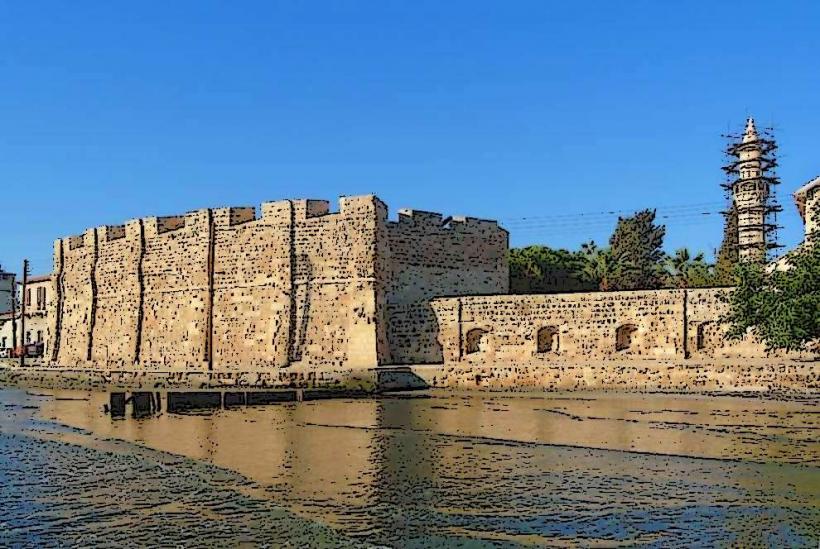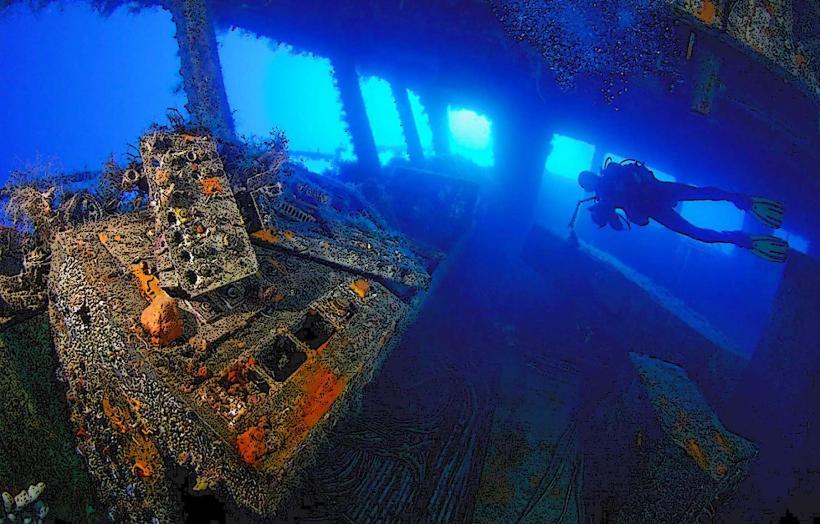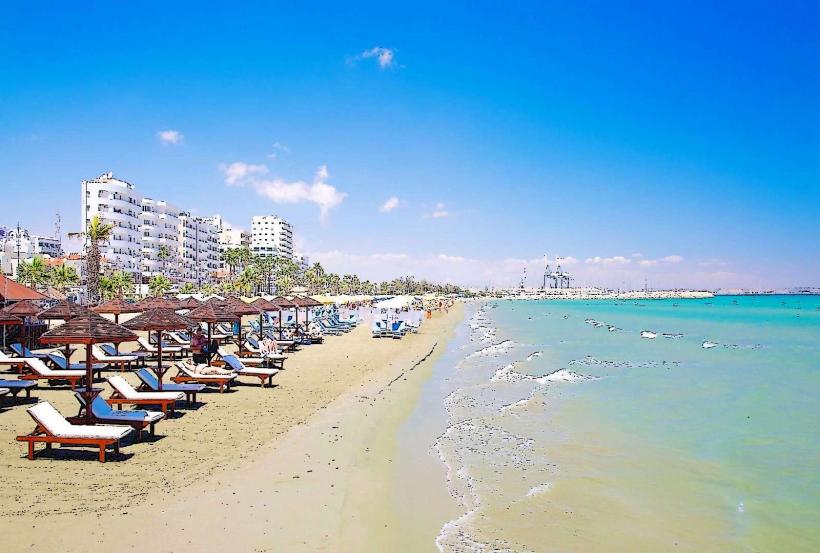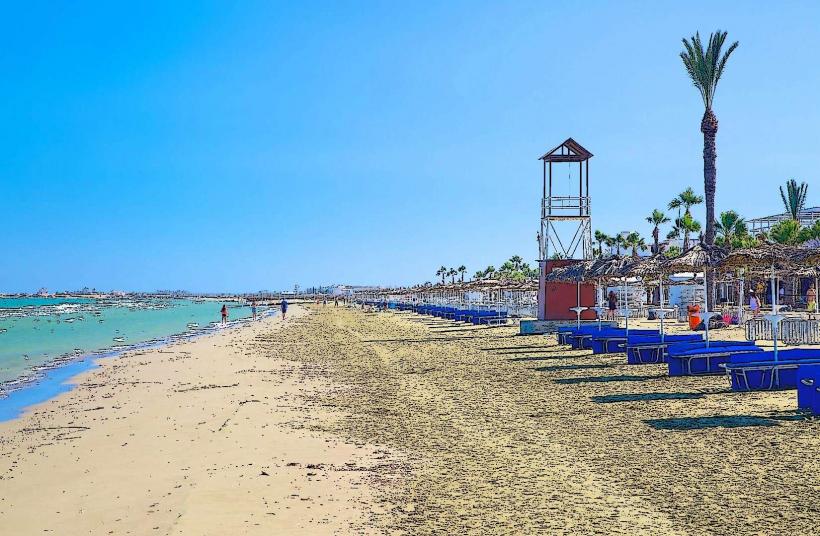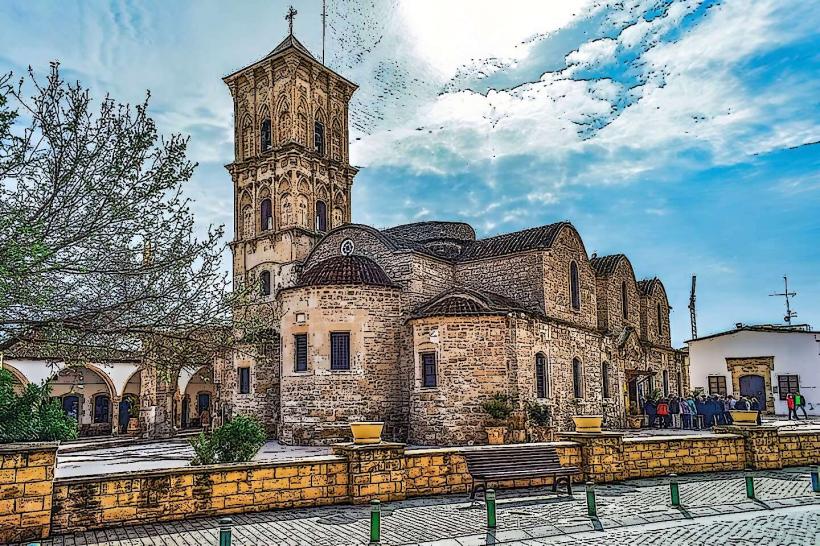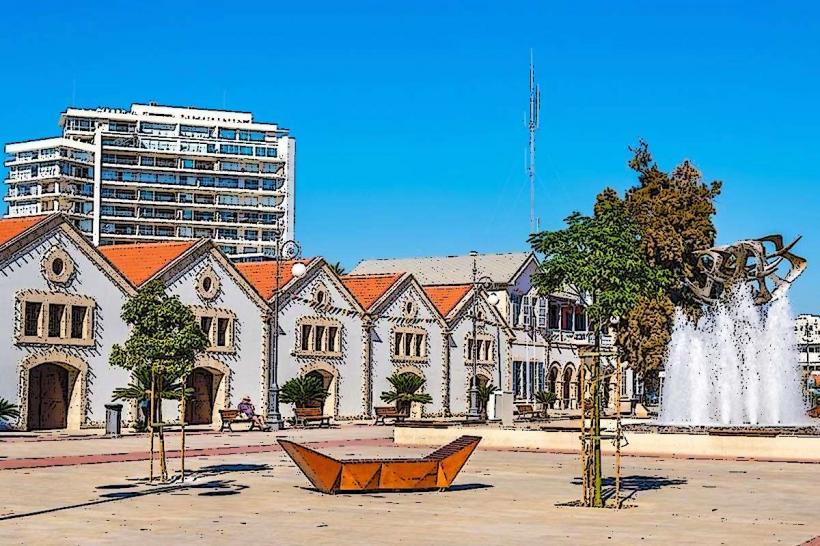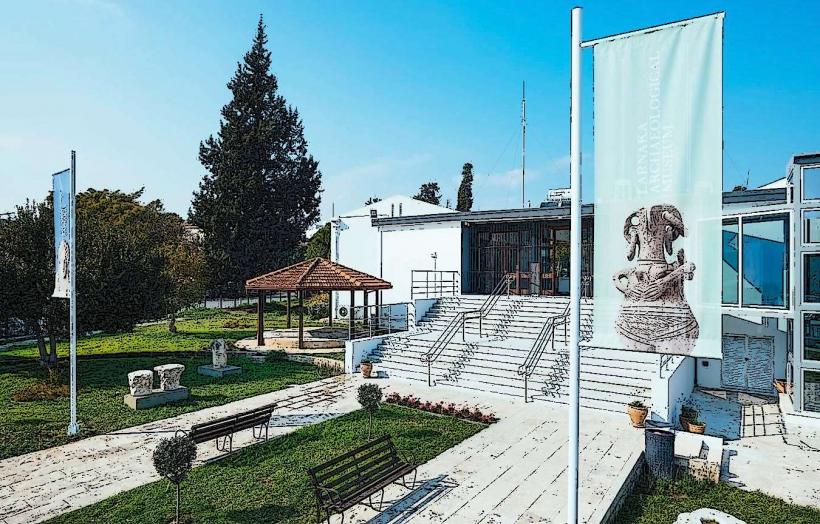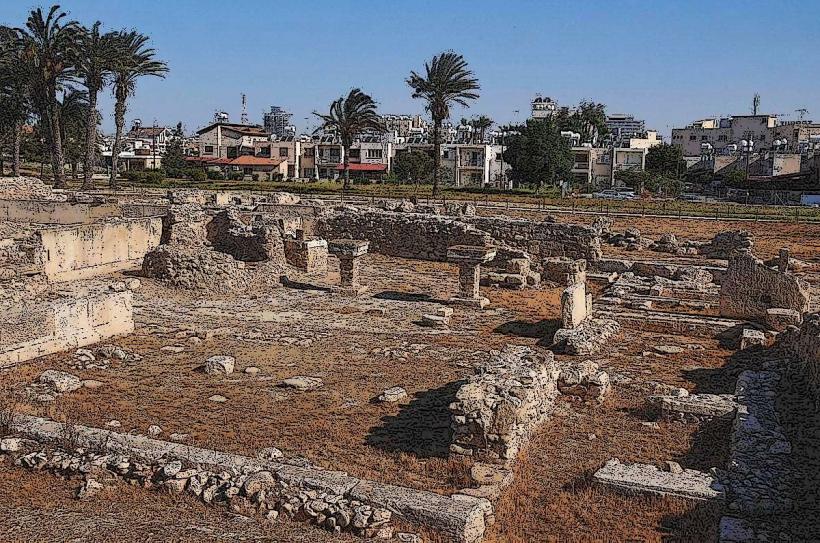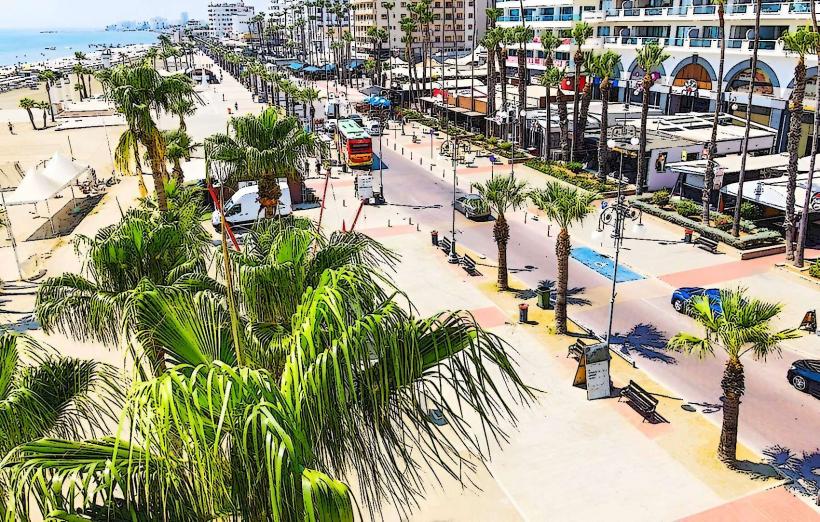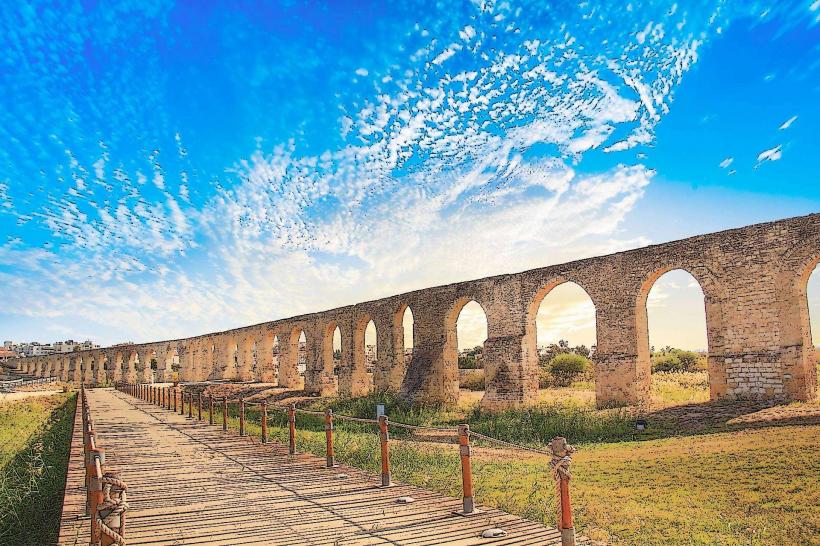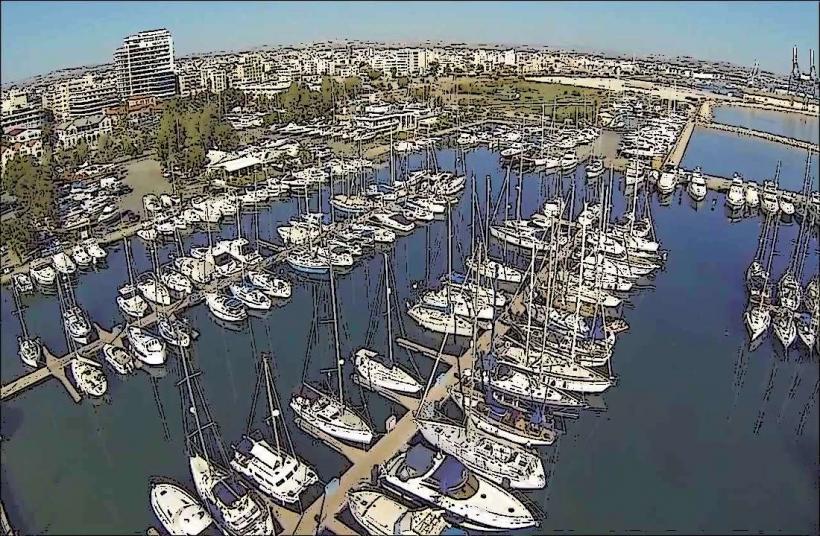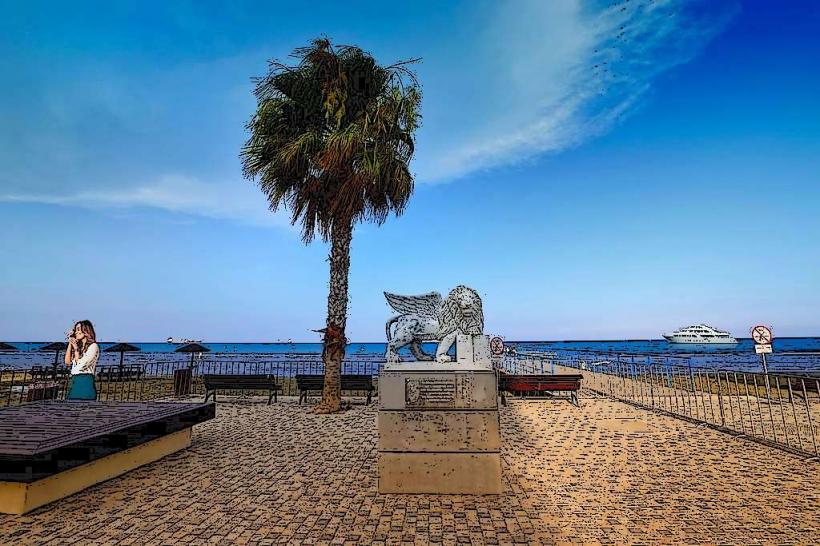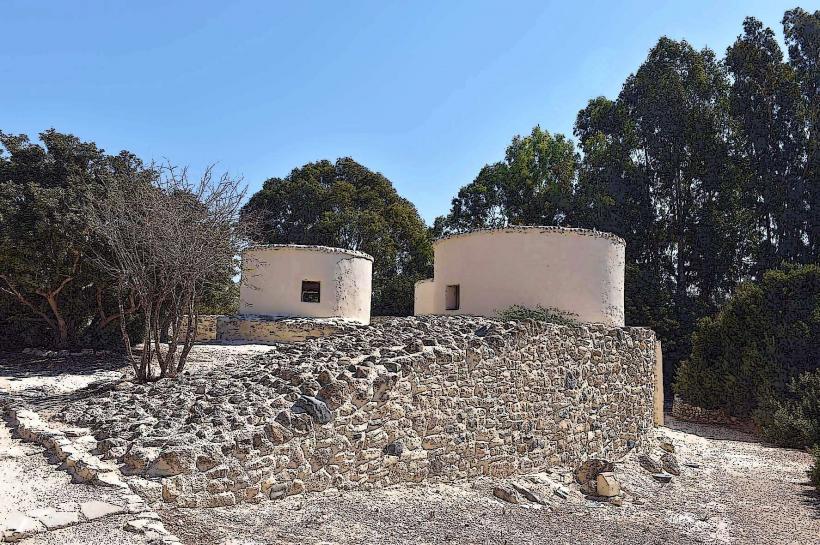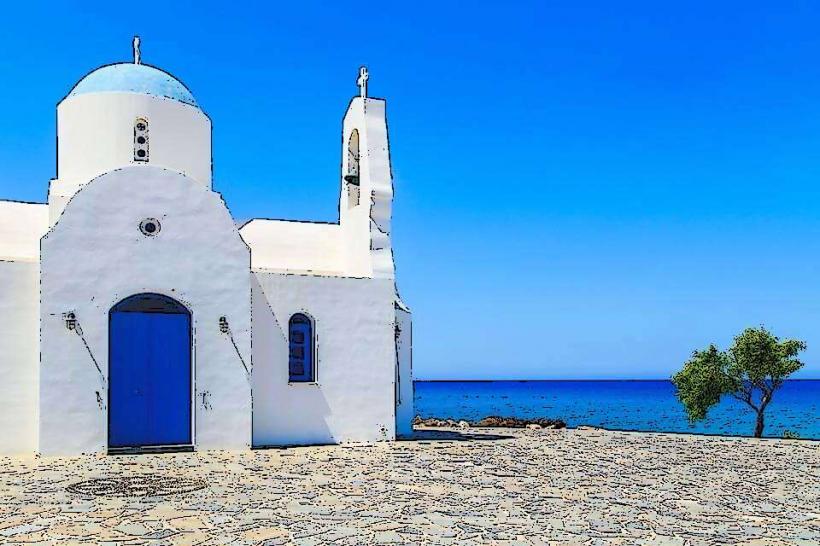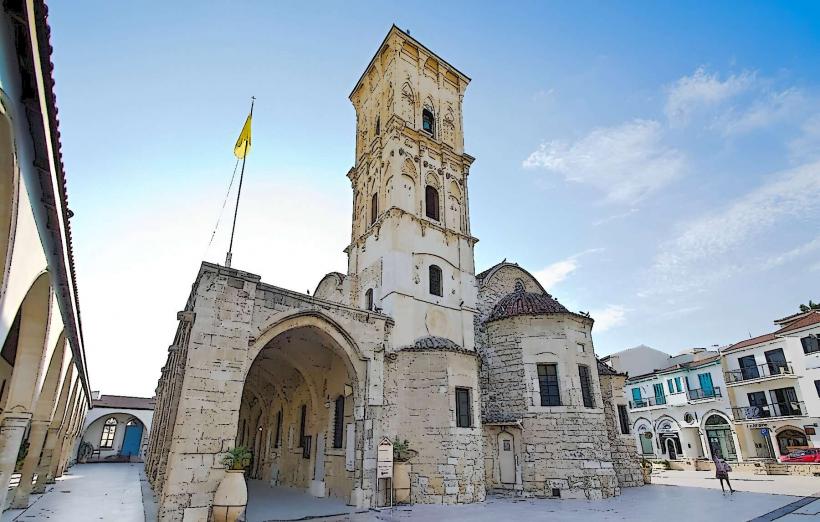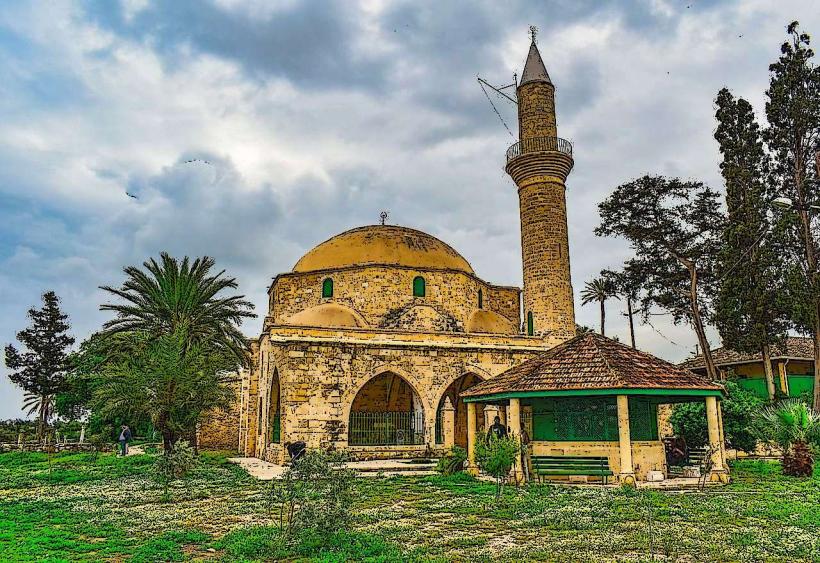Information
Landmark: Church of Saint LazarusCity: Larnaca
Country: Cyprus
Continent: Europe
The Church of Saint Lazarus (Greek: Ἱερός Ναός Ἁγίου Λαζάρου, Ieros Naos Agiou Lazarou) is one of the most significant and historic Christian landmarks in Larnaca, Cyprus. This Eastern Orthodox church is dedicated to Saint Lazarus of Bethany, the biblical figure famously raised from the dead by Jesus Christ, and it holds both religious and cultural importance. Here are the key details about the Church of Saint Lazarus:
1. Historical and Religious Significance:
- Biblical Connection: According to Christian tradition, Lazarus was a friend of Jesus who had been dead for four days before Jesus miraculously brought him back to life (John 11:1-44). After his resurrection, Lazarus is believed to have lived in Cyprus, where he became the first Bishop of Kition (modern-day Larnaca) before he died.
- The Relics of Saint Lazarus: The church is said to house the tomb of Saint Lazarus, making it a significant pilgrimage site for Christians. It is believed that Lazarus was buried in the church’s crypt after his death, and his relics were kept here for centuries.
- Resurrection and Feast: The church is particularly important to the Eastern Orthodox Church, as Saint Lazarus is revered as a saint. His feast day is celebrated on December 17th in the Orthodox calendar, drawing many worshippers to the church.
2. Architecture and Design:
- Byzantine Influence: The current structure of the Church of Saint Lazarus dates back to the 9th century (around 890 AD) during the Byzantine period. It is built in the style of a Byzantine basilica, featuring a cross-shaped plan and a central nave with two side aisles.
- Exterior and Facade: The church’s exterior is relatively simple but dignified, with a large wooden door and stone walls. The church’s facade is framed by large arched windows and a bell tower that adds to its grandeur.
- Interior: The interior of the church is richly decorated with icons, frescoes, and mosaics that depict scenes from the life of Jesus and other saints, characteristic of Byzantine religious art. One of the most striking features is the iconostasis, a beautifully crafted screen adorned with religious icons that separates the sanctuary from the congregation.
- The Tomb of Saint Lazarus: Beneath the church is a crypt believed to be the burial site of Lazarus. The tomb is a prominent feature of the church and is located in the lower level, where visitors can venerate the saint’s relics. The crypt contains an ancient sarcophagus, which is believed to have contained the remains of Lazarus.
3. Historical Context and Role:
- Foundation and Restoration: The Church of Saint Lazarus has undergone multiple phases of construction and restoration. The original church was built during the Byzantine period, but it has been renovated several times throughout the centuries. Most notably, it was restored in the 18th century by the Venetian authorities when the church was in a state of decay.
- Cultural Symbol: The church is not only a religious site but also a symbol of Cyprus's long Christian history. It stands as a testament to the early spread of Christianity on the island and the role of Cyprus as a center of Christian worship in the Mediterranean. The church’s association with Saint Lazarus has made it a focal point for Christian pilgrimage for over a millennium.
4. Role in the Cyprus Orthodox Church:
- Cathedral Status: Today, the Church of Saint Lazarus functions as an active cathedral of the Archdiocese of Cyprus. It is used for regular Orthodox Christian liturgies, and it also hosts special services, particularly on Lazarus Saturday (the Saturday before Holy Week), when the raising of Lazarus is commemorated in the liturgical calendar.
- Pilgrimage and Pilgrims: The church is a site of pilgrimage, especially for those who wish to honor Saint Lazarus and seek blessings for healing or protection. Pilgrims from around the world, particularly from the Orthodox Christian world, visit to venerate Saint Lazarus and pay respects to his relics.
5. Modern Role and Visitor Experience:
- Tourism and Education: The Church of Saint Lazarus attracts thousands of visitors and tourists each year, both for its religious significance and its architectural beauty. Many tourists visit the church as part of their exploration of Larnaca's historical and cultural landmarks, as it is centrally located near the Larnaca Promenade and the marina.
- Cultural Events: The church is also a venue for cultural events, especially during Christian religious holidays. Special liturgies, concerts, and events are held throughout the year, drawing both worshippers and those interested in Cyprus’s rich cultural heritage.
- Access and Opening Hours: The church is open to the public daily, and it is free to visit. However, visitors are asked to observe proper behavior and dress modestly, as it is an active place of worship.
6. Conservation and Preservation:
- The Church of Saint Lazarus has been carefully preserved and maintained over the centuries to protect its historical and religious integrity. Modern conservation efforts focus on preserving the church's Byzantine art, mosaics, and relics while maintaining the church as a place of active worship.
- The Cyprus Department of Antiquities has also worked to protect the church's archaeological significance, especially the crypt and the sarcophagus, which are key components of the site’s historical value.
7. Symbolism and Iconography:
- The iconography in the church plays a central role in conveying the religious message of resurrection. Scenes of Lazarus’s resurrection from the dead, as well as images of Christ and the saints, are depicted throughout the church. These images highlight themes of eternal life, hope, and salvation, which are central to the Orthodox Christian faith.
In conclusion, the Church of Saint Lazarus is not just an architectural gem but also a deeply spiritual site that connects visitors to the early Christian history of Cyprus. It is a focal point for religious life in Larnaca and a place of pilgrimage for many, offering both a historical perspective on Christianity’s spread in the region and an active space for prayer and worship. Its combination of rich history, beautiful Byzantine design, and connection to one of the most famous miracles in the Bible makes it a significant landmark in both Cyprus and Christian tradition.

